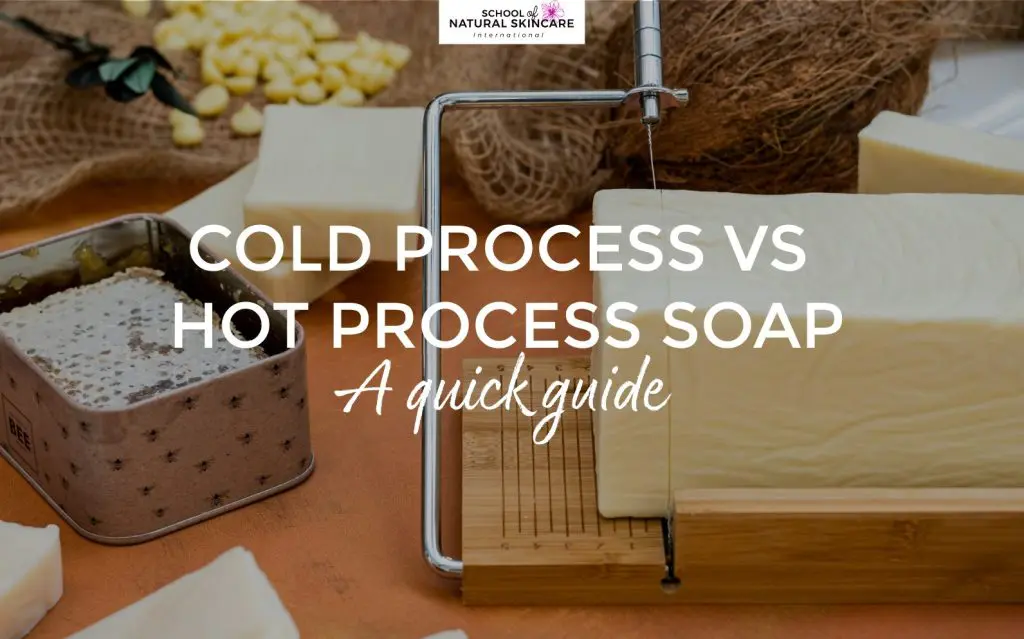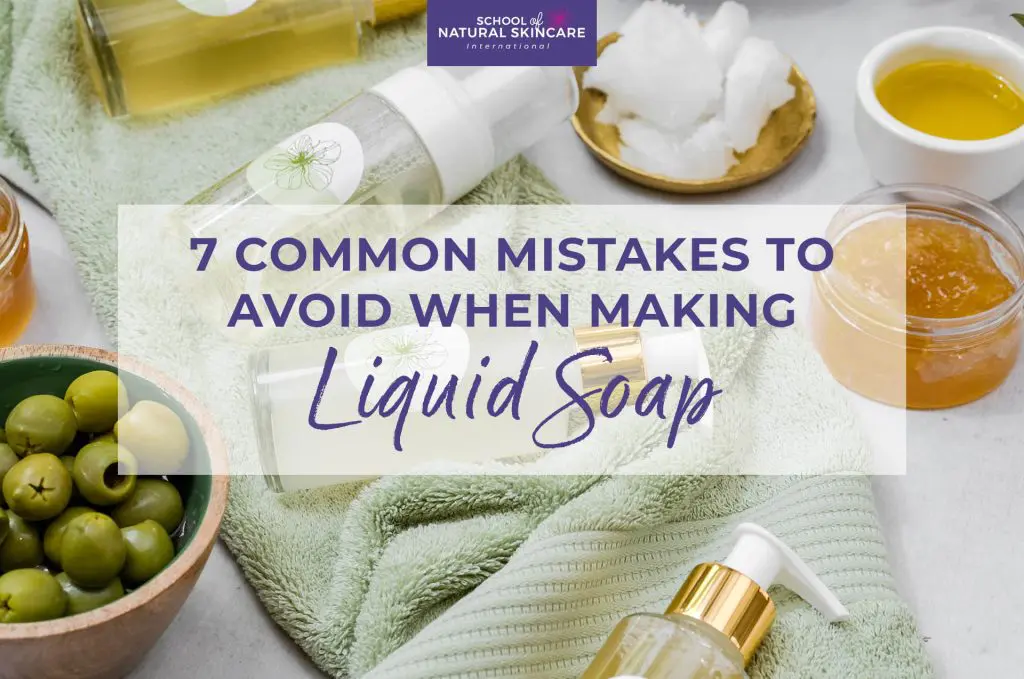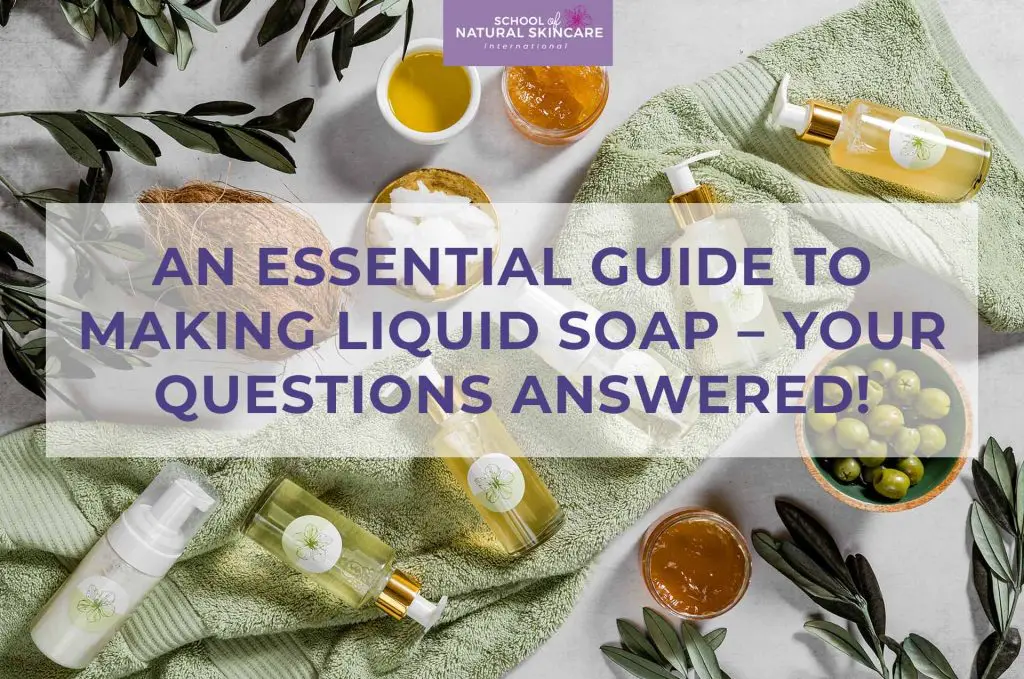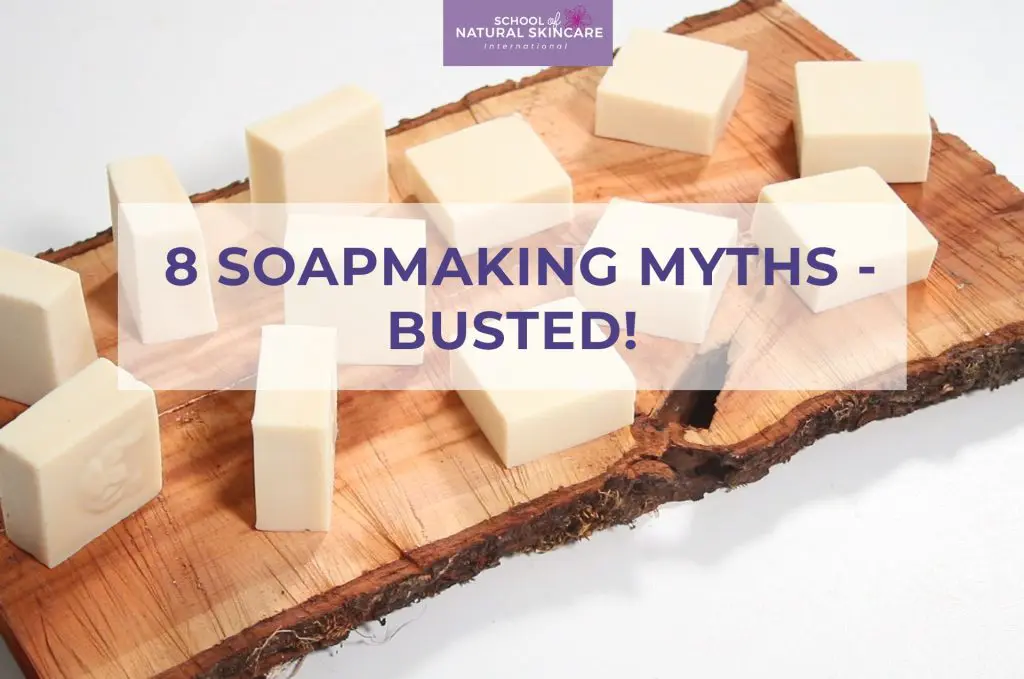There are two main methods of soap making: cold process (CP), and hot process (HP). So what is the difference between cold process vs hot process soap? And which should you make?
Cold process vs hot process soap
Both cold process and hot process soap bars are produced via a chemical process called saponification, a reaction between triglyceride and lye. This creates glycerin (glycerol), and a salt of fatty acids, which is soap.
Both types of soap can be made from different fats (for example, plant oil, plant butter or animal fat) and a strong alkali, also called ‘lye’.
As the name suggests, the main difference between cold process vs hot process soap is that hot process soap is made at higher temperatures than cold process soap. Cold process soap is made at relatively low temperatures (usually 30-50°C), while hot process soap is made at higher temperatures (usually 50-100°C). This affects the soap making method as well as the properties of the finished soap.
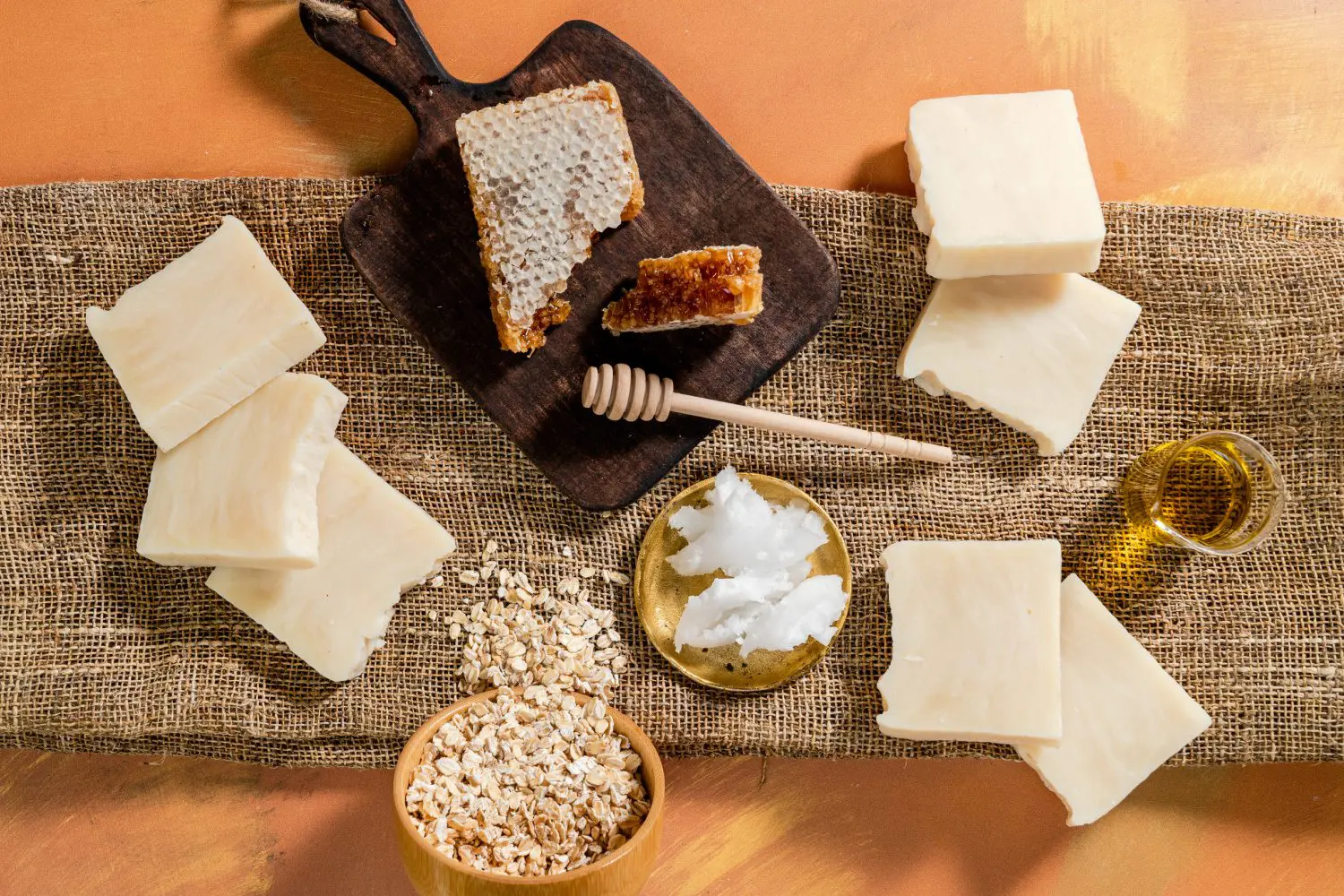
Key differences between cold process vs hot process soap making
Some of the key difference between the two types of soap making are:
1. Temperature
Cold process soap is made at relatively low temperatures (usually 30-50°C), while hot process soap (as the name suggests) is made at higher temperatures (usually 50-100°C).
2. Saponification
In hot process soap making the saponification happens during the soap making process while the soap is ‘cooking’ in a slow cooker. In cold process soap, saponification occurs in the mold.
3. Equipment
Cold process and hot process soap making use the same basic equipment – lye-safe containers, stick (immersion) blender, whisk, spatula, thermometer, soap mold. One key difference is that in hot process soap making a slow cooker (or crock pot) is very helpful. This is used to ‘cook’ the oil mixture while it saponifies. Using a slow cooker/crock pot ensures the soap mixture does not overheat and that the temperature remains fairly constant.
4. Post-cook superfat
Superfat is ‘extra fat’ that does not react with the lye and turn into soap. It is a portion of fat (oils, butters) that is added to make the finished bars more nourishing. In hot process soap the superfat is added after the saponification is complete, which means you can control which oil or butter is your ‘superfat’ and therefore the extra nourishing properties your soap will have. In cold process soap making, the superfat is made of all of the oils in the recipe.
5. Time to make
In hot process soap making, especially if working at high temperatures, the whole process can be very quick, even 30 minutes from start to finish.
6. Cure time
In cold process soap making you need to wait four to six weeks for your soap to cure before you can use it. Hot process soap bars can be used straight away since the saponification is finished before the soap is poured into the mold. However, a couple of weeks of cure time will still benefit the soap.
7. Skill level
Beginners should start by making cold process soap. To ensure you make soap correctly and safely we recommend taking a detailed and reliable class such as the School of Natural Skincare’s Diploma in Soap Making or Certificate in Cold Process Soap Making.
As it takes place at higher temperatures, hot process soap making requires more skill and should only be carried out once you are comfortable with cold process soap making. Make sure you follow a comprehensive and reliable guide, such as our Hot Process soap making class which you’ll find in the 3rd part of our Diploma in Soap Making.
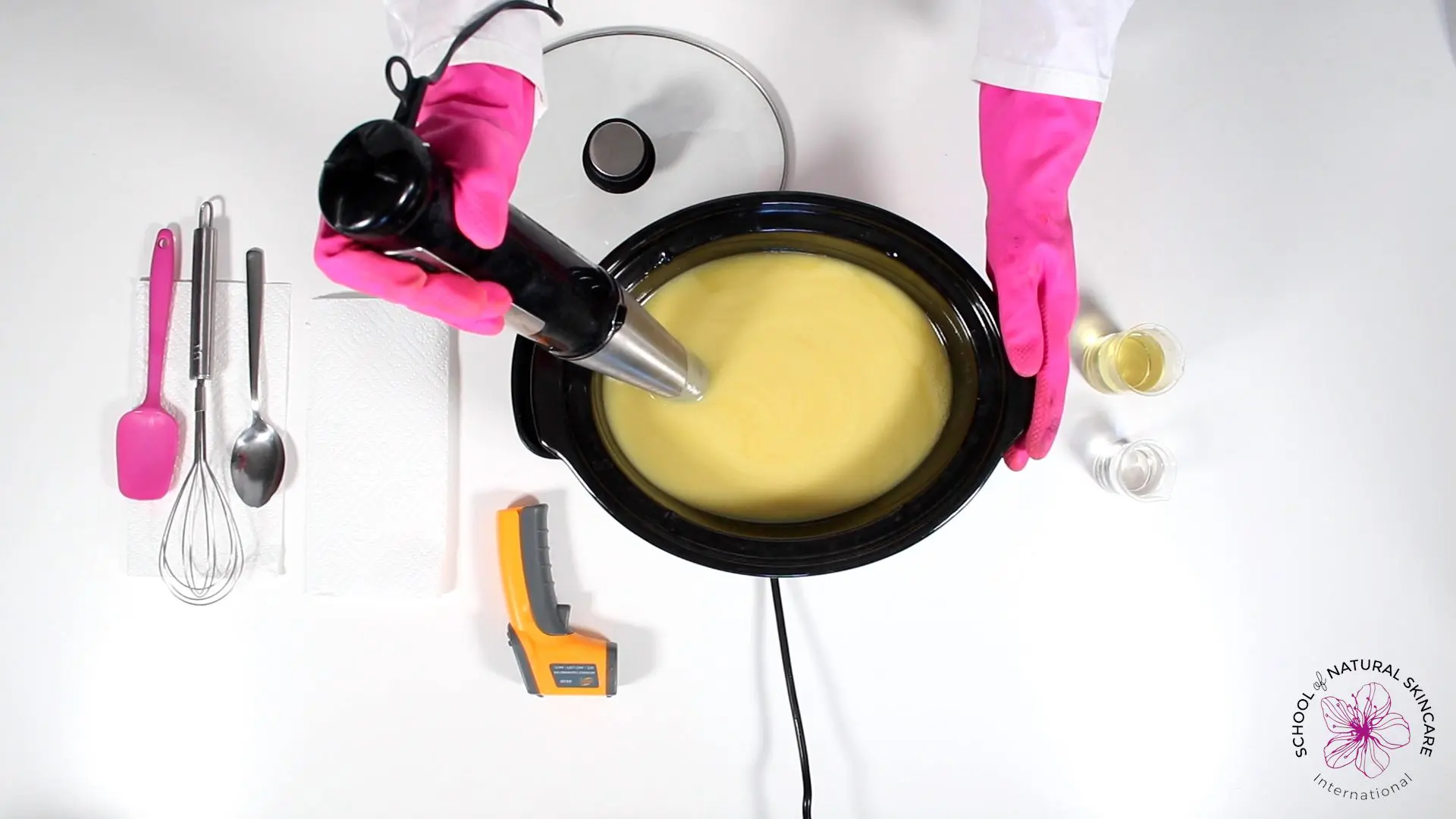
At a glance: Cold process vs hot process soap
| Cold process | Hot process | |
| Skill level | Suitable for beginners | Suitable for those experienced in cold process soap making |
| Temperature | Made at 30-50°C | Made at 50-100°C |
| Equipment | Lye-safe containers, stick (immersion) blender, whisk, spatula, thermometer, soap mold, safety equipment (rubber gloves, protective clothing, goggles) | The same as cold process, plus a slow cooker/crock pot |
| Saponification | Occurs in the mold | Occurs during the cooking stage |
| Post-cook superfat | Superfat is made of all of the oils in the recipe | We can control which oils are added as the superfat oils |
| Unmolding | Usually 48-72 hours after pouring | Can be unmolded within a day |
| Cutting | Soon after unmolding | Cut straight after unmolding |
| Curing | Needs to cure for four to six weeks before use | Soap can be used as soon as it is cut, though it does benefit from curing (4 weeks) |
| Soda ash | Can develop soda ash | Never develops soda ash |
| Appearance | Smooth appearance, usually light, creamy color | Deeper, darker color; rustic appearance |
| Swirls | Elaborate swirls and many different swirl techniques are possible | Only very simple swirls are possible |
| Water content | Various, from 25-38% (water as a percentage of oils) | Keep the total water content (water as a percentage of oils) between 30% and 38% |
| Acceleration, ricing, separation, cracking | Can occur when using unsuitable/accelerating fragrances or when soap overheats in the mold | Does not occur |
| Clean up | Laborious as utensils are still coated with a high amount of unsaponified oils | Easy |
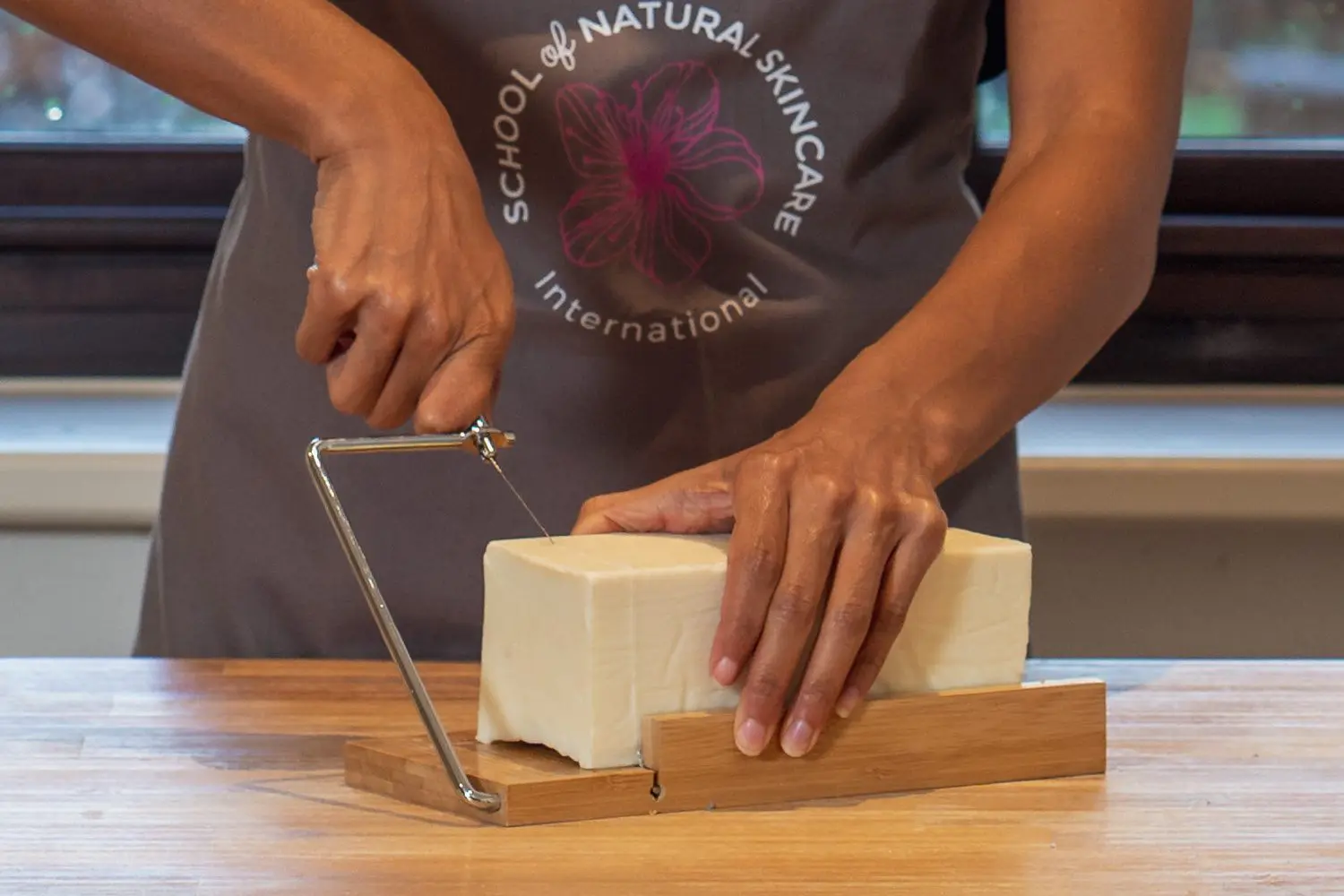
Learn more in our online Soap Making Classes!
There are three options available to you.
1. Join our Diploma in Soap Making
Our Diploma in Soap Making is the most comprehensive course available covering soap making and teaches students to make cold process, hot process and liquid soap making, as well as how to design beautiful soap swirling patterns with your soap making.
This is where you’ll learn everything there is to know about soap making.
Take a look at our Diploma in Soap Making to find out more.
2. Join our Certificate in Cold Process Soap Making
If you’re only interested in cold process soap making, then you’ll want to look at our Certificate in Cold Process Soap Making. This will help you to learn how to make your own cold process soap bars.
Take a look at our Certificate in Cold Process Soap Making to find out more.
3. Become a Member of our Natural Cosmetic Formulation Club
The Diploma in Soap Making consists of 19 modules and each one of these is also found inside our Natural Cosmetic Formulation Club. They are all found in 4 key classes
- Cold Process Soap Making
- Advanced Soap Swirling
- Hot Process Soap Making
- Liquid Soap Making
By being a member of the Club, you can unlock each one of these 4 classes, one at a time starting with Cold Process Soap Making (this is a prerequisite for all other modules) before choosing which class to do next.
Take a look at the Natural Cosmetic Formulation Club to find out more.
Of course, if you are already a member of the Natural Cosmetic Formulation Club, head over to the Courses dashboard to get started!
Can you really learn to make soap?
Yes 100% you can. You just need some help to ensure you do it properly – and that’s where we come in.
Cold process soap making is the ideal place to start if you are new to soap making. With our comprehensive, online Cold Process Soap Making class, you’ll be making gorgeous soaps in a matter of days.
If you have already made at least a few batches of cold process soap and would like to learn how to make hot process soap we have the perfect class for you!
Advanced soap making: Hot Process Soap is a detailed class that covers everything you need to know to make hot process soap safely and successfully.
Containing:
- Two detailed step-by-step videos showing you exactly how to make both low temperature and high temperature hot process soap (plus what to do in the case of a ‘soap volcano’!)
- A beautiful and detailed class textbook to download
- Tried-and-tested recipes to follow and tutor support from a master soapmaker…
…you’ll have everything you need to create exceptional hot process soap.
Join the Diploma in Soap Making to start learning how to make your own soaps today.
Alternatively, join our Natural Cosmetic Formulation Club, unlock and study the classes one at a time.
Please note: As the Hot Process Soap Making class is an advanced class we recommend that you only take it once you are confident in your ability to make cold process soap.
Here’s a sneak peek at the class contents:
- Introduction To Hot Process (HP) Soap making
- Benefits of hot process soap making
- Differences between hot and cold process soap making
- Mandatory safety information
- Soap making terminology
- Making Hot Process Soap
- Low temperature vs high temperature hot process soap making
- Hot process soap making overview
- The soap making process: hot process soap (low temperature)
- The soap making process: hot process soap (high temperature)
- Variations On The Hot Process Soap Making Method
- Fluid hot process soap
- Making hot process soap without a slow cooker
- Hot Process Soap Recipes
- Basic Nourishing Soap with Shea Butter
- Cocoa Butter Soap
- Oatmeal Honey Soap
- Milk and Yogurt Soap
For any questions about this article or the courses we offer on this subject and how to enroll, please get in touch with our customer service team by email using [email protected]

